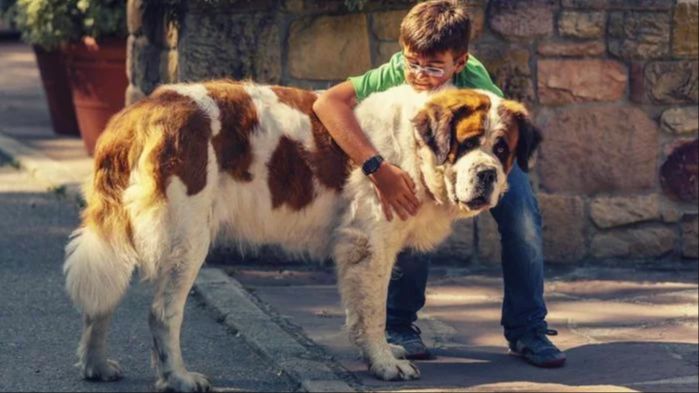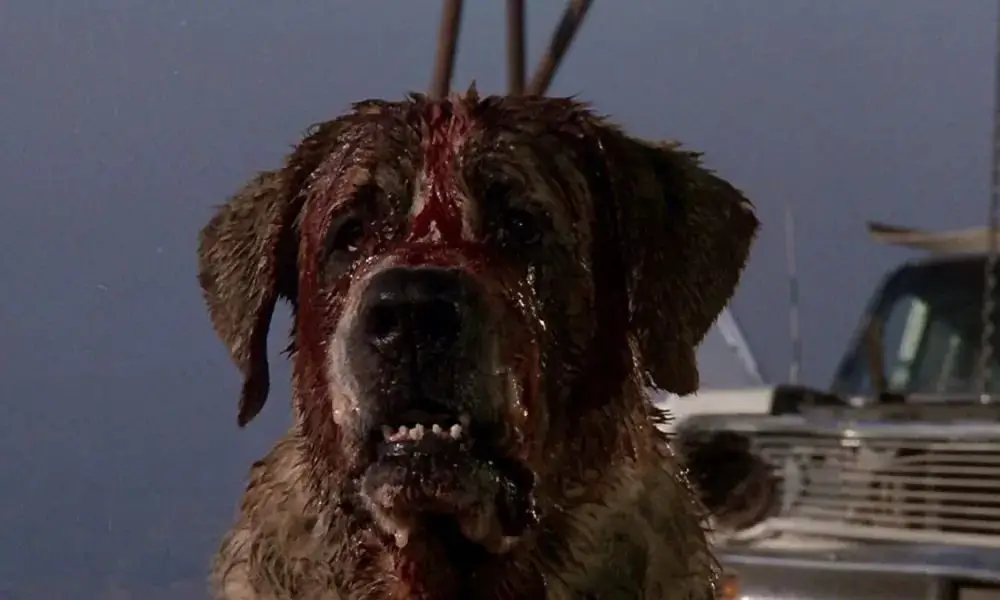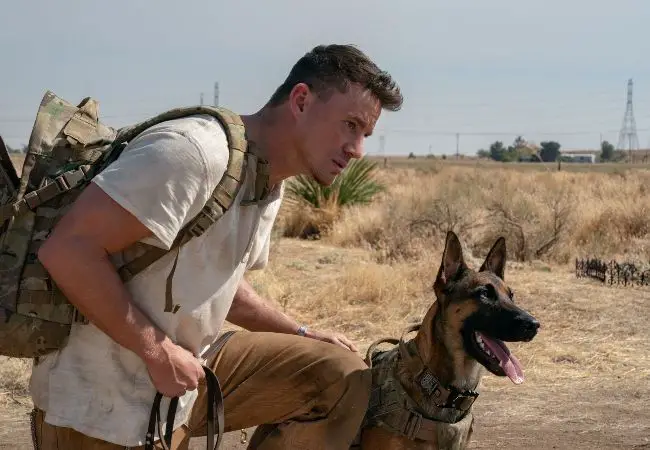Introduction
The 1983 horror film Cujo is based on Stephen King’s 1981 novel of the same name. It tells the story of a friendly St. Bernard dog named Cujo who becomes rabid and terrorizes a mother and her young son. Though Cujo was played by trained dog actors, the film required the dogs to exhibit aggressive and violent behavior on screen.
Cujo was a major box office success, grossing over $21 million against a $5 million budget. However, the film faced criticism from animal rights activists for its depictions of animal cruelty. The film brought to light important questions about the well-being and treatment of dog actors on Hollywood sets.
About Cujo
Cujo is a 1983 American horror film based on Stephen King’s 1981 novel of the same name. The film was directed by Lewis Teague and stars Dee Wallace, Daniel Hugh Kelly and Danny Pintauro. Cujo tells the story of a mother, Donna Trenton, and her young son Tad, who are terrorized by the title character, a rabid St. Bernard
The film follows Donna and Tad as they become trapped in their Ford Pinto after it breaks down in rural Maine. Meanwhile, the friendly St. Bernard named Cujo contracts rabies after getting bitten by a bat. Cujo becomes increasingly vicious and turns on the residents of the small town, going on a killing spree. The rabid dog eventually traps Donna and Tad inside their car, keeping them hostage as the searing summer heat takes its toll
Donna desperately tries to save her son and herself while also dealing with her crumbling marriage. Her husband, Vic, is off on a “business trip” with his lover as the life-threatening crisis unfolds. Cujo displays increasingly aggressive and erratic behavior as the rabies progresses, attacking several people before setting his sights on Donna and Tad (https://en.wikipedia.org/wiki/Cujo_(film)).
Use of Dogs in Film
Dogs have been used in films since the early days of cinema. Some of the earliest films, like Rescued by Rover in 1905, featured dogs in starring roles. As filmmaking techniques advanced, dogs continued to be popular cast members. Their expressive faces and energetic personalities make them natural actors.
Training dogs for film roles became a specialized skill. Positive reinforcement techniques are often used, rewarding dogs for desired behaviors. Clicker training is a common method, providing a clear signal to mark correct actions (Insider). Professional animal trainers like Joel Silverman even offer courses on preparing dogs for film and TV (Silverman).
While training has become more sophisticated, the basics remain the same. Dogs are taught to perform behaviors on cue, repeat actions consistently, and work calmly amid the bustle of a movie set. Careful preparation allows dogs to shine on camera while ensuring a safe, positive experience.
Cujo’s Dog Actors

The dogs who played the role of the rabid St. Bernard Cujo in the 1983 film were integral to bringing Stephen King’s horrifying character to life on the big screen.
According to ScreenRant, there were five St. Bernards used during filming. The main dog who played Cujo was named Max, and he was trained by veteran Hollywood animal trainer Karl Miller. Miller actually recommended using a Great Dane instead of a St. Bernard for Cujo, but the director Lewis Teague wanted to stay true to the book’s description.
In addition to Max, the other St. Bernard dogs used for stunts and attacking scenes were named Bolt, Bruno, and Mushroom. These dogs were all trained to snarl viciously and run on command, without actually harming their human co-stars like Dee Wallace who played the mother trapped in her car by Cujo.
Trainers used a combination of treats and affection to get the dogs to perform the aggressive behaviors needed for the role. The dogs were never actually angry or rabid, though their growling on film was made to look frighteningly real.
Training the Dogs

The dogs who played Cujo required extensive training to prepare for their demanding roles in the film. According to Screenrant, the dogs were trained by Karl Lewis Miller, an experienced Hollywood animal trainer. Miller used positive reinforcement techniques to teach the dogs specific commands for different aggressive behaviors needed for the film.
To get the dogs to convincingly snarl, bark, and lunge, Miller would reward them with praise and treats when they exhibited these actions on command. The dogs were also trained to snarl and snap their jaws near actors without making contact. Careful training was required to ensure the dogs would not actually bite the actors.
In addition to working with live dogs, the filmmakers used a mechanical dog head for some scenes. This allowed them to film more dangerous stunts without putting a live dog at risk, such as when Cujo violently rams his head into a car door. The mixed use of trained dogs and props was an important part of ensuring the film could vividly depict Cujo’s rabid aggression without endangering any animals.
According to a Reddit post, “No animals were harmed in the filming of this movie.” This was made possible by the thoughtful care and preparation the dogs received from their trainers before taking on their dramatic roles.
Filming Cujo
The production of Cujo relied heavily on trained dogs and animal actors. According to one source, there were four St. Bernard dogs used to play Cujo in the film, with each one trained to do different things (source). The main dog who played aggressive Cujo was named Mushroom, and he was trained by renowned Hollywood animal trainer Karl Miller. Mushroom was able to be given hand signals and vocal commands to snarl viciously or leap angrily, while remaining non-aggressive between takes.

In an interesting behind-the-scenes anecdote, director Lewis Teague once recalled that Mushroom actually fell asleep during a complex setup, and they had trouble waking the dog to film the next scene. The dogs playing Cujo needed periodic rest and couldn’t work long days like human actors. Other dogs were brought in for stunts like smashing through windows. Mechanical dogs built by Phil Cory were also used in some scenes.
Ultimately, through clever editing, training, and a mix of real dogs, stunt doubles, and props, the production was able to bring Cujo to life on screen without harming any animals. The iconic role required patience and ingenuity from the filmmakers.
Dog Acting vs. Real Aggression
There are notable differences between the aggression shown by dogs who are trained to act aggressive for film and TV versus dogs who show real aggressive behavior. According to the American Kennel Club (https://www.akc.org/expert-advice/training/reactivity-vs-aggression/), real dog aggression is often motivated by guarding territory or resources, fear, frustration, prey drive, or pain. In contrast, dogs trained for film and TV learn to show aggressive behaviors on command in a controlled setting for the sake of performance.
Dog trainers use positive reinforcement techniques to teach dogs to display certain behaviors temporarily for the camera. The dogs are rewarded with treats and praise for “acting” aggressive in specific circumstances without feeling actual aggression. Additionally, trainers ensure the dogs feel safe and comfortable at all times when learning these behaviors (https://www.nylabone.com/dog101/dog-aggression-vs-playing).
Real dog aggression often involves stiff body language, bared teeth, growling, lunging, and biting. Trained acting dogs may display similar behaviors, but only on cue for the performance. Their body language will stay loose and relaxed when not actively performing. The dogs understand their “aggression” is pretend and part of a game (https://www.dogtopia.com/blog/tell-difference-dog-play-aggression/).
Reception
Cujo received a mixed reception from audiences, but many praised the performances of the dogs who played Cujo. According to a review on IMDb, “The dog himself is absolutely terrifying really, the make up they put on him to make him look menacing.” This indicates that the dogs were able to convincingly portray aggression and rabies on screen. On Rotten Tomatoes, another reviewer wrote, “The dog himself is absolutely terrifying really, the make up they put on him to make him look menacing.” Again, this shows the dogs delivered frightening performances that shocked audiences.
Though some thought the violence was overdone, most agreed the dogs excelled at acting aggressive as if they had rabies. The performances added to the horror and emotion of the film. Even decades later, Cujo is remembered for the acting of the dogs playing the title character.
Impact on Animal Welfare
Filming Cujo raised concerns about the treatment and welfare of the dogs on set. Though the dogs were trained professionally, the aggressive behavior portrayed on camera was disturbing for some viewers. However, the filmmakers and trainers maintained that the dogs were never harmed and that their aggressive reactions were trained behaviors, not signs of actual distress.
According to the animal trainers Lewis Rupert and Gerry Therrien, the dogs were treated humanely throughout filming. The dogs followed commands and never actually attacked anyone. Rupert stated, “We spent hours and hours working the dogs, getting them accustomed to the noises on the set and teaching them to ‘play the part’ without ever actually being aggressive” (The Washington Post). Still, watching the dogs snarl and lunge on screen caused unease among some viewers.
The intense scenes in Cujo highlighted concerns about pushing animals too far for the sake of entertainment. However, advocates maintained that with proper training and handling, the dogs were not harmed. Their performance spoke to the skills of animal trainers able to elicit such dramatic behaviors without cruelty. Ultimately Cujo showed that with the right precautions, animals can portray aggression safely under controlled conditions.
Legacy
Cujo had a significant impact on animal acting and welfare in Hollywood. The film sparked concern over the humane treatment of the dogs during filming, especially the aggressive behaviors the dogs were trained to perform (Screenrant). While no animals were harmed during filming, many questioned whether making dogs appear vicious went against promoting animal welfare.

The American Humane Association monitored the filming and ensured the dogs’ wellbeing. But Cujo made it clear guidelines were needed for acceptable animal acting methods. It led to increased oversight and protection for animal actors. Many productions now work with animal behavior experts to utilize only positive reinforcement training. The legacy of Cujo was to improve animal welfare in the movie industry.